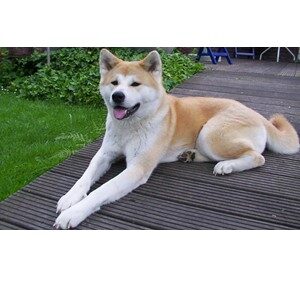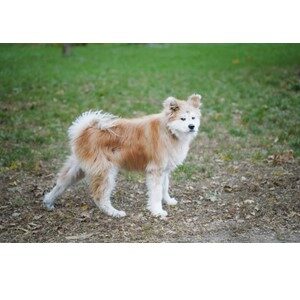Akita Dog Bed
Akita’s Like Orthopedic Dog Beds for Comfort!
Introduction
The Akita dog bed takes into account their health conditions, sleeping position and preferences. Because of their health issues, an orthopedic bed is best. The Akita, a powerful and dignified breed, is a true testament to loyalty and courage.
Originating from Japan, this noble dog has a rich history as a guardian and a companion. With their striking double coats, curled tails, and attentive expressions, Akita’s are visually captivating, but it’s their unwavering devotion to their family that truly sets them apart.
Historically, they served as hunting companions for tracking large game like bears, and over time, they became symbols of protection and prosperity in Japanese culture. The famous story of Hachiko, an Akita known for his remarkable loyalty, has immortalized the breed as a symbol of faithfulness. Akita’s are large and muscular, standing tall and exuding confidence.
However, they are more than just their imposing appearance. Beneath their stoic exterior lies a sensitive and intelligent dog with a deep need for companionship and purpose. Their independence and strength require experienced and dedicated ownership, as proper training and socialization are essential for a well-balanced Akita.
While their protective instincts and reserved nature make them excellent guardians, Akita’s are also affectionate and gentle with their families.
They thrive in homes where they are treated with respect, consistency, and love. Whether you are drawn to their majestic looks, historical significance, or loyal temperament, owning an
Akita is a journey that demands responsibility and rewards you with an unparalleled bond.
In this guide, we cover information that new Akita owners may not know about. The information includes best dog bed types, brands, facts and fun facts, health conditions, behavior concerns, tips for new owners, costs of ownership, and safe foods and foods to avoid.
Pros and Cons of The Akita Dog
This is an excellent video for new dog owners to view prior to getting an Akita dog. It reviews the pros and cons of Akita dog ownership to help you to determine if this breed is for you.
Best Dog Bed Types
When choosing a dog bed for an Akita, it’s essential to consider their large size, dense coat, and need for comfort and support. Here are the best dog bed types for Akita’s:
1. Orthopedic Beds
Best for: Older Akita’s or those prone to joint issues (e.g., hip dysplasia).
- Features thick memory foam for pressure relief and support.
- Helps distribute weight evenly to reduce stress on joints.
- Ideal for large breeds like the Akita.
Recommended Options:
- Beds with a 4+ inch memory foam base.
- Brands like Big Barker or PetFusion.
2. Elevated Dog Beds
Best for: Akita’s living in warmer climates or those prone to overheating.
- Keeps them off the floor, promoting airflow and keeping them cool.
- Durable and easy to clean.
- Often chew-resistant, making it ideal for younger or more active Akita’s.
Recommended Options:
- K&H Pet Products Elevated Pet Bed.
- Coolaroo Original Elevated Dog Bed.
3. Bolster Beds
Best for: Akita’s that love resting their head or leaning against something.
- Includes raised edges or bolsters for extra support and a sense of security.
- Offers ample space for stretching out.
Recommended Options:
- Beds with durable fabric like canvas or heavy-duty polyester.
- Brands such as Furhaven or Friends Forever.
4. Heavy-Duty Beds
Best for: Chewers or Akita’s that are rough with their bedding.
- Made with reinforced seams and tear-resistant materials.
- Built to withstand wear and tear from large, powerful dogs.
Recommended Options:
- Kuranda Dog Beds.
- K9 Ballistics Tough Dog Bed.
5. Cooling Beds
Best for: Akita’s in hot climates or during summer months.
- Includes cooling gel or breathable materials to help regulate body temperature.
- Perfect for thick-coated breeds like the Akita.
Recommended Options:
- Sealy Lux Cooling Gel Orthopedic Dog Bed.
- Arf Pets Self-Cooling Dog Mat.
6. Washable or Waterproof Beds
Best for: Puppies or Akita’s prone to shedding and drooling.
- Features removable, machine-washable covers for easy cleaning.
- Waterproof liners protect the inner material from spills or accidents.
Recommended Options:
- PetFusion Ultimate Dog Bed with Waterproof Liner.
- Bedsure Waterproof Dog Bed.
7. Extra-Large Beds
Best for: Akita’s that like to stretch out while sleeping.
- Provides ample space for large breeds.
- Look for beds with a non-slip bottom to prevent sliding.
Recommended Options:
- Big Barker Giant Dog Bed (tailored for larger breeds).
- KOPEKS Orthopedic Pillow Dog Bed.
Key Considerations for Akita Dog Beds
- Size: Ensure the bed is large enough (look for beds designed for dogs 75+ lbs).
- Material: Opt for durable, chew-resistant fabrics and memory foam or gel for comfort.
- Temperature Regulation: Akita’s can overheat due to their dense double coat; consider cooling or elevated beds if your home is warm.
- Support: Beds with orthopedic or memory foam are ideal for long-term joint health.
Best Dog Bed Brands
Here’s a curated list of excellent dog beds for Akita’s, with specific brand and product recommendations across various categories:
1. Orthopedic Beds
Perfect for: Older Akita’s or those needing joint support.
- Big Barker 7″ Pillow Top Orthopedic Dog Bed
-
- Specifically designed for large breeds.
- Features a 7-inch-thick memory foam base.
- Comes with a 10-year warranty for foam shape retention.
- Price: $300–$400 (depending on size).
- PetFusion Ultimate Orthopedic Dog Bed
-
- 4-inch memory foam with bolsters for head support.
- Water-resistant and tear-resistant cover.
- Easy to clean with a removable, washable cover.
- Price: $120–$250.
2. Elevated Dog Beds
Perfect for: Akita’s in warm climates or those prone to overheating.
- Coolaroo Elevated Dog Bed
-
- Made from breathable high-density polyethylene (HDPE) fabric.
- Durable steel frame with a raised platform.
- Affordable and easy to clean.
- Price: $30–$60.
- K&H Pet Products Original Elevated Pet Cot
-
- Features a mesh center for optimal airflow.
- Available with or without a canopy for sun protection.
- Easy to assemble and portable.
- Price: $50–$80.
3. Bolster Beds
Perfect for: Akita’s who enjoy resting their heads on raised edges.
- Furhaven Orthopedic Sofa-Style Dog Bed
-
- L-shaped bolster design for head support.
- Orthopedic foam base for comfort and joint health.
- Removable, washable cover.
- Price: $50–$150.
- Friends Forever Orthopedic Dog Bed Lounge Sofa
-
- Durable memory foam mattress with raised bolsters.
- Non-slip bottom and tear-resistant cover.
- Stylish design fits home decor.
- Price: $150–$200.
4. Heavy-Duty Beds
Perfect for: Chewers or active Akita’s.
- K9 Ballistics Tough Rectangle Dog Bed
-
- Chew-resistant and tear-resistant materials.
- Waterproof lining and washable cover.
- Suitable for heavy-duty use.
- Price: $130–$200.
- Kuranda Dog Bed
-
- Elevated design with an aluminum frame and chew-proof fabric.
- Ideal for destructive chewers.
- Price: $100–$160.
5. Cooling Beds
Perfect for: Akita’s in warm environments.
- Sealy Lux Premium Orthopedic Cooling Bed
-
- Includes cooling gel for temperature regulation.
- Orthopedic foam supports joints and spine.
- Machine-washable cover.
- Price: $150–$300.
- Arf Pets Self-Cooling Gel Mat
-
- Pressure-activated cooling gel.
- Lightweight and portable for use indoors or outdoors.
- Price: $40–$80.
6. Washable/Waterproof Beds
Perfect for: Puppies or Akita’s prone to shedding and drooling.
- Bedsure Waterproof Dog Bed
-
- Fully waterproof with a removable, washable cover.
- Orthopedic foam for added comfort.
- Price: $40–$80.
- BarksBar Orthopedic Dog Bed
-
- Waterproof base with a soft, quilted cover.
- Orthopedic foam and non-slip bottom.
- Price: $70–$120.
7. Extra-Large Beds
Perfect for: Akita’s that like to stretch out.
- KOPEKS Orthopedic Pillow Dog Bed
-
- 7-inch-thick memory foam with an extra-wide design.
- Includes a waterproof inner liner and washable cover.
- Price: $150–$200.
- Frisco Plush Orthopedic Bolster Bed (Chewy Exclusive)
-
- Designed for large breeds, with plenty of room to stretch.
- Features an ultra-plush top and orthopedic foam base.
- Price: $50–$100.
Key Shopping Tips
- Measure Your Dog: Ensure the bed is at least as long as your Akita when fully stretched out (typically 45–50 inches).
- Look for Durability: Choose materials like canvas, nylon, or ballistic fabric for longevity.
- Consider Comfort: Memory foam and bolsters are excellent for Akita’s’ large, muscular builds.
Facts and Fun Facts about Akita’s
Measurements:
- Size: Large
- Group: Working Group
- Height Male: 26 – 28 inches
- Height Female: 24 – 26 inches
- Weight Male: 100 – 130 lbs.
- Weight Female: 70 – 100 lbs.
- Length: 35 – 43.5 inches
- Lifespan: 10 – 14 years
- Fully Grown: 10 – 12 months (Will continue to put on weight until age of 2)
- Colors: Black, Fawn, Red, White, Brown Brindle, Red & Black Overlay, Silver & Black Overlay, Brown & Black Overlay, Fawn & Black Overlay
- Popularity: This breed is ranked the 58th most popular according to the American Kennel Club in 2023.
- Intelligence: This breed is ranked the 54th most intelligent according to Professor Stanley Coren at the University of British Columbia.
Facts About Akita’s
-
- Origin: The Akita hails from the snowy, mountainous regions of northern Japan, specifically the Akita Prefecture. Initially bred for hunting, they tracked and held game like wild boar, elk, and even bears until hunters arrived.
- Types:
- Japanese Akita Inu: Smaller, foxlike features, and fewer coat color options (usually white, red, or brindle).
- American Akita: Larger, bear-like features, with more color variety, including black masks and pinto patterns.
- Loyalty: This trait is epitomized by Hachikō, whose devotion earned the Akita a reputation as a symbol of loyalty and fidelity.
- Double Coat: The Akita’s coat consists of a dense undercoat and a rougher outer coat, designed to keep them warm in cold climates. Grooming during shedding seasons is intense, with fur often coming out in clumps!
- Temperament: Akita’s are naturally aloof with strangers but incredibly loving and playful with their families. This reserved nature makes them great protectors.
- Guard Dogs: Their alertness and instinct to protect their family means Akita’s often act as quiet, watchful guardians. They’re unlikely to bark unnecessarily but will react if something seems amiss.
- Hachikō: Hachikō’s story of loyalty took place in the 1920s in Japan. A bronze statue of him still stands outside Shibuya Station in Tokyo as a tribute.
- Exercise Needs: While not as hyperactive as some breeds, Akita’s benefit from daily walks and mental stimulation to prevent boredom. Without proper outlets, they can become destructive.
- Health Concerns:
- Hip Dysplasia: A hereditary condition that can lead to arthritis.
- Bloat (Gastric Torsion): A life-threatening condition requiring immediate attention.
- Autoimmune Disorders: Such as VKH (Vogt-Koyanagi-Harada-like syndrome), which can affect pigmentation and skin.
- Trainability: They respond best to firm yet gentle training methods. Positive reinforcement is key, as Akita’s dislike harsh corrections.
- Diet: Being large and muscular, Akita’s need a diet rich in protein and healthy fats. Overfeeding can lead to obesity, which exacerbates joint issues.
- They Were Once Called “Snow Country Dogs: Once upon a time, Akita’s were simply known as “snow country dogs,” according to the Akita Club of America. The breed hailed from a snowy, rural, mountainous region of Japan, where they hunted boar, elk, and the small Yezo bear. There is even a museum in the city of Odate devoted to the breed.
- Akita’s Gain Energy Once the Weather Cools
When the weather turns cooler, the dogs seem to have a “turbo” button that switches on. If there is snow on the ground, they will stay out all day hunting rabbit, squirrel, and other small game, in a securely fenced yard until they have to come inside the house.
14. They Have Webbed Toes
Akita’s have webbed toes to help walk on snow. These webbed toes distribute their weight more effectively. Historically, they keep their front dewclaws because these “ice picks” help them climb out of icy water.
Fun Facts About Akita’s
- Snow Lovers: Their heritage in northern Japan makes them perfectly suited to snowy environments. Many Akita’s adore playing and rolling in snow.
- Silent Dogs: Akita’s are known for their quiet demeanor. They communicate more through body language and expressions than barking.
- Webbed Toes: Their slightly webbed feet help them traverse snowy terrains more efficiently, a trait shared with other cold-weather breeds.
- Smile: The “Akita smile” is a unique feature where their mouths curve upwards, giving them a cheerful and affectionate appearance.
- Royal Roots: During the Edo period, Akita’s were highly valued and exclusively bred for Japanese nobility. Their care was often a mark of wealth.
- Gift of Respect: In Japanese culture, figurines or images of Akita’s are given to celebrate milestones such as births, recoveries, or significant achievements.
- Cat-Like Grooming: Akita’s are unusually clean dogs. They often clean their paws and face meticulously, much like cats.
- Fiercely Independent: They’re known for making decisions on their own, sometimes challenging inexperienced owners.
- One-Person Dogs: Akita’s often develop a profound attachment to one person while being affectionate with the whole family. This makes them fantastic companion dogs for individuals or smaller households.
- Chow Chow Relation: Genetic studies have shown that Akita’s and Chow Chows share common ancestry, dating back to ancient times in Asia.
- Acting Dogs: Akita’s have made their mark in Hollywood, most famously in Hachiko: A Dog’s Tale starring Richard Gere. The movie illustrates their unwavering loyalty.
- Athletic Jumpers: Despite their bulky frame, Akita’s are agile and capable of jumping high barriers. Fencing needs to be secure to prevent escape attempts!
Common Health Conditions
Akita’s are a generally robust and hardy breed, but they are prone to certain health conditions due to their genetics and physical structure. Here’s a list of the most common health conditions Akita’s may face:
1. Hip Dysplasia
- What it is: A hereditary condition where the hip joint doesn’t fit properly into the socket, leading to arthritis.
- Symptoms: Lameness, difficulty rising, or reluctance to climb stairs.
- Management: Weight control, joint supplements, physical therapy, or surgery in severe cases.
2. Bloat (Gastric Dilatation-Volvulus, GDV)
- What it is: A life-threatening condition where the stomach twists, trapping gas and cutting off blood supply.
- Symptoms: Distended abdomen, unproductive retching, restlessness, or sudden collapse.
- Prevention: Feeding smaller, frequent meals and avoiding vigorous activity after eating.
3. Autoimmune Disorders
- Examples:
- VKH Syndrome (Vogt-Koyanagi-Harada-like Syndrome): Causes depigmentation of the skin, nose, and eyes, along with potential vision loss.
- Pemphigus: A skin condition causing lesions and crusting.
- Symptoms: Skin changes, hair loss, or eye irritation.
- Management: Immunosuppressive medications and close veterinary care.
4. Hypothyroidism
- What it is: An underactive thyroid gland that leads to a slow metabolism.
- Symptoms: Weight gain, lethargy, thinning fur, or dry skin.
- Management: Lifelong thyroid hormone replacement therapy.
5. Progressive Retinal Atrophy (PRA)
- What it is: A degenerative eye disorder causing gradual vision loss.
- Symptoms: Night blindness and eventual complete blindness.
- Management: No cure, but affected dogs adapt well to vision loss.
6. Sebaceous Adenitis (SA)
- What it is: An autoimmune skin condition that destroys sebaceous glands.
- Symptoms: Dry, scaly skin, patchy hair loss, and a musty odor.
- Management: Regular baths with medicated shampoos, dietary supplements, and topical treatments.
7. Elbow Dysplasia
- What it is: A developmental issue affecting the elbow joints, leading to arthritis.
- Symptoms: Limping, stiffness, or reluctance to exercise.
- Management: Weight control, pain management, or surgery in advanced cases.
8. Cancer
- Common Types: Lymphoma, osteosarcoma (bone cancer), and hemangiosarcoma.
- Symptoms: Lumps, unexplained weight loss, or lethargy.
- Management: Early detection is crucial; treatment options include surgery, chemotherapy, or palliative care.
9. Cranial Cruciate Ligament (CCL) Injury
- What it is: A tear in the ligament stabilizing the knee, common in large breeds.
- Symptoms: Limping or holding a leg off the ground.
- Management: Rest, braces, or surgery depending on severity.
10. Allergies
- What it is: Sensitivities to food, environmental factors (pollen, dust), or skin irritants.
- Symptoms: Itchy skin, ear infections, or gastrointestinal issues.
- Management: Diet changes, allergy testing, or medication.
11. Glaucoma
- What it is: Increased pressure in the eye, leading to pain and possible vision loss.
- Symptoms: Red eyes, tearing, or cloudy corneas.
- Management: Medications to reduce pressure or surgery in severe cases.
12. Immune-Mediated Hemolytic Anemia (IMHA)
- What it is: A condition where the immune system destroys red blood cells.
- Symptoms: Lethargy, pale gums, rapid breathing, or collapse.
- Management: Aggressive veterinary care with immunosuppressive drugs.
How to Help Prevent or Manage Health Issues
- Regular Vet Visits: Early detection is key to managing many conditions.
- Responsible Breeding: Work with reputable breeders who screen for genetic conditions like hip dysplasia and PRA.
- Healthy Lifestyle: Maintain a balanced diet, regular exercise, and a healthy weight.
- Pet Insurance: Consider investing in insurance to cover unexpected health costs.
Behavior Concerns
Akita’s are a loyal and powerful breed with unique behavioral characteristics that new owners should be aware of. Here are the key behavior concerns and tips to manage them:
1. Dominance and Independence
- Concern: Akita’s are strong-willed and naturally dominant. Without proper training, they may try to assert themselves as the leader of the household.
- Tip: Establish yourself as a calm and confident leader early on. Use consistent boundaries, rules, and positive reinforcement training techniques.
2. Aloofness with Strangers
- Concern: Akita’s are known to be reserved and sometimes wary of strangers. This can lead to overprotective or territorial behavior.
- Tip: Early and ongoing socialization is critical. Expose your Akita to different people, settings, and situations from a young age to help them develop confidence and proper social skills.
3. Aggression Toward Other Dogs
- Concern: Akita’s, particularly of the same sex, can be aggressive toward other dogs. This trait stems from their hunting and guarding heritage.
- Tip: Monitor interactions with other dogs carefully and never leave them unsupervised with unfamiliar dogs. Enroll them in controlled socialization or obedience classes to foster positive behavior.
4. Prey Drive
- Concern: Akita’s have a strong prey drive and may chase small animals like cats, squirrels, or rabbits.
- Tip: Always keep your Akita on a leash or in a securely fenced yard. Teach strong recall and impulse control commands, such as “leave it” and “stay.”
5. Stubbornness
- Concern: Akita’s are intelligent but can also be stubborn, making training challenging at times.
- Tip: Use positive reinforcement, patience, and consistency. Keep training sessions short and engaging to prevent boredom.
6. Sensitivity to Discipline
- Concern: Akita’s can be sensitive to harsh corrections, which can lead to fear or defensive reactions.
- Tip: Avoid using physical punishment or aggressive training methods. Focus on rewarding positive behavior and redirecting undesirable actions.
7. Guarding Instincts
- Concern: Akita’s are natural protectors and may guard food, toys, or even family members.
- Tip: Teach them “drop it” and “leave it” commands. Handle these situations with care to prevent reinforcing the behavior.
8. Need for Exercise and Mental Stimulation
- Concern: Without enough physical and mental activity, Akita’s can become bored, leading to destructive behaviors like chewing or digging.
- Tip: Provide daily exercise such as walks, play sessions, or hikes. Engage their minds with puzzle toys, obedience training, or advanced commands.
9. Separation Anxiety
- Concern: Akita’s form strong bonds with their families and may experience anxiety when left alone for long periods.
- Tip: Gradually train your Akita to feel comfortable being alone. Use crate training and calming techniques to help manage their anxiety.
- Strong-Willed Nature
- Anita’s are intelligent and independent, but they can also be stubborn. They require firm, consistent leadership to avoid developing bad habits.
- Tip: Early training and socialization are essential to teach boundaries and commands.
11. Shedding and Grooming
- Akita’s shed heavily twice a year (“blow coat”), which can overwhelm unprepared owners. Regular grooming is essential during these periods.
- Tip: Invest in a good-quality brush and schedule frequent grooming sessions, especially during shedding seasons.
12. Exercise Needs
- While not as energetic as some breeds, Akita’s still need regular physical and mental exercise to prevent boredom and destructive behavior.
- Tip: Aim for daily walks, playtime, and engaging activities like puzzle toys or obedience training.
13. Potential for Aggression
- Poorly socialized Akita’s can become aggressive toward other dogs or people, particularly if they feel threatened.
- Tip: Enroll in training classes early and use positive reinforcement to build good social behaviors.
14. Heat Sensitivity
- Their thick double coat makes them prone to overheating in hot climates.
- Tip: Provide plenty of shade, fresh water, and avoid outdoor activities during the hottest parts of the day.
- Lifetime Commitment
- Akita’s are long-lived (10-13 years on average) and require a dedicated owner who can provide for their needs over their entire lifetime.
- Tip: Ensure you have the time, resources, and commitment for the long-term care of this breed.
Additional Advice for New Akita Owners
- Socialization: Expose them to various situations, people, and animals early to reduce fear and aggression.
- Crate Training: Helps manage their independence while keeping them safe and comfortable.
- Reputable Breeder or Rescue: Always adopt from reputable breeders who screen for genetic issues or consider rescuing an Akita in need.
New Owner Tips
Here are some valuable tips you can share with new Akita owners to help them raise a happy, well-adjusted dog:
General Care Tips
- Start Training Early:
- Begin obedience training and socialization as soon as possible. Akita’s are intelligent but can be headstrong, so consistent training is key.
- Use positive reinforcement and avoid harsh corrections, which can lead to distrust.
- Focus on Socialization:
- Expose your Akita to different people, dogs, and environments from a young age to reduce their natural wariness of strangers.
- Arrange safe, controlled meet-and-greets with other dogs to prevent aggression.
- Establish Leadership:
- Akita’s respond well to confident, calm leadership. Set clear rules and boundaries early on to reinforce your role as the pack leader.
- Leash Training is Crucial:
- Due to their size and strength, leash manners are essential. Teach your Akita not to pull and to walk calmly by your side.
- Provide a Secure Environment:
- Akita’s are known for their agility and ability to jump fences, so ensure your yard is secure. A high, sturdy fence is a must.
Exercise and Mental Stimulation
- Moderate Daily Exercise:
- Akita’s don’t need endless energy outlets, but they thrive on regular walks and playtime to stay fit and mentally stimulated.
- Activities like hiking, obedience challenges, or puzzle toys work well for this intelligent breed.
- Avoid Overexertion in Heat:
- Akita’s are better suited for colder climates, so avoid strenuous exercise during hot weather to prevent overheating.
- Mental Enrichment:
- Engage your Akita with puzzle toys, hide-and-seek games, or training sessions to challenge their minds and reduce boredom.
Grooming Tips
- Be Prepared for Shedding:
- Akita’s shed year-round but “blow their coat” twice a year. Invest in a high-quality deshedding brush and vacuum!
- Brush them weekly (or daily during shedding seasons) to keep their coat healthy and minimize shedding.
- Bathe Occasionally:
- Akita’s are naturally clean and don’t require frequent baths—once every 6-8 weeks is sufficient unless they get dirty.
Health and Nutrition Tips
- Feed Them Properly:
- Choose a high-quality dog food suited for large breeds and monitor portions to avoid overfeeding.
- Feed smaller meals multiple times a day to reduce the risk of bloat.
- Regular Vet Checkups:
- Schedule routine visits to monitor their health and catch potential issues like hip dysplasia or autoimmune conditions early.
- Monitor Their Weight:
- Obesity can worsen joint issues, so keep your Akita at a healthy weight with proper diet and exercise.
Behavior and Socialization Tips
- Supervise Play with Other Pets:
- Akita’s may show dominance or a high prey drive, so always supervise interactions with smaller pets or dogs of the same sex.
- Teach Proper Manners Early:
- Start teaching commands like “sit,” “stay,” and “leave it” early on to establish good habits and make them easier to control.
- Provide Alone-Time Training:
- Teach your Akita to be comfortable alone to prevent separation anxiety. Use crate training as a safe space for downtime.
Owner Preparedness Tips
- Be Patient:
- Akita’s are independent thinkers and may take longer to learn commands. Stay patient and consistent—they’ll get there!
- Commit for the Long Haul:
- Akita’s are a 10-13 year commitment. Be sure you’re prepared for their long-term care, including their grooming, health, and training needs.
- Research Local Laws:
- Some areas may have restrictions on Akita’s. Check your local regulations to ensure you can meet any requirements.
- Join an Akita Community:
- Connect with other Akita owners online or locally for advice, tips, and support specific to the breed.
- Secure Space:
- Akita’s are known for their prey drive and may try to chase smaller animals. Ensure your yard is securely fenced and monitor them when outdoors.
By following these tips, new owners can build a strong, loving bond with their Akita and ensure they thrive in their home.
Average Costs of Ownership
Owning an Akita comes with significant costs, as they are a large breed with specific needs. Here’s a breakdown of average expenses:
1. Initial Costs (One-Time)
- Adoption or Purchase:
- Adoption: $200–$500
- Breeder: $1,000–$4,000 (depending on pedigree and breeder reputation)
- Supplies: $300–$800
- Items include a crate, bed, leash, collar, food/water bowls, toys, and grooming tools.
2. Monthly Costs
- Food: $50–$100/month
- Akita’s are large dogs and require high-quality food (3–5 cups/day).
- Treats: $10–$30/month
- Pet Insurance: $40–$100/month
- Insurance helps cover vet emergencies, especially since Akita’s are prone to conditions like bloat or hip dysplasia.
- Grooming Supplies: $10–$20/month
- Costs can be higher if using a professional groomer.
3. Annual Costs
- Routine Vet Care: $200–$500/year
- Vaccinations, checkups, and flea/tick/heartworm prevention.
- Grooming: $300–$600/year
- Professional grooming services for coat maintenance during heavy shedding seasons.
- Training Classes: $100–$300/year
- Group classes or private sessions may be necessary for obedience and behavior training.
4. Potential Additional Costs
- Emergency Medical Care: $500–$5,000 per incident
- Boarding or Pet Sitting: $25–$75/day
- If you travel and need someone to care for your dog.
- Fencing or Home Adjustments: $500–$2,000
- Akita’s need a secure outdoor space, so you may need to invest in proper fencing.
Estimated Total Annual Cost
- Average: $1,500–$3,000/year
- Costs can vary depending on the dog’s health, location, and lifestyle.
If you’re thinking long-term, Akita’s have an average lifespan of 10–15 years, so total costs over their lifetime could range from $15,000–$45,000. Be sure your budget can afford this expense.
Safe Foods
Below is a list of safe foods for Anita’s:
Proteins
- Chicken/Turkey: Cooked and skinless, they are lean and easy to digest. Great as a base for meals.
- Beef: Lean cuts (e.g., ground or stewed beef) provide essential amino acids and minerals. Avoid heavily marbled cuts.
- Fish: Cooked salmon and sardines are excellent for coat health due to omega-3 fatty acids. Avoid fish with small bones or those high in mercury (e.g., tuna).
Fruits
- Apples: Slice into manageable pieces, and freeze for a refreshing treat in summer.
- Blueberries: Offer a small handful as training rewards or mix into plain yogurt.
- Watermelon: Dice into chunks; ensure no seeds or rind, as these can cause digestive issues.
Vegetables
- Carrots: Raw or lightly steamed. They’re crunchy and excellent for dental health.
- Pumpkin: Cooked or pureed plain pumpkin can ease diarrhea or constipation.
- Broccoli and cauliflower: Steamed in moderation. They are nutrient-rich but can cause gas.
Grains
- Oats: Cook plain oatmeal with water (no milk, sugar, or flavorings) for a mild stomach-soothing meal.
- Rice: Plain white or brown rice is great for upset stomachs. Mix with boiled chicken for a bland diet.
Healthy Fats
- Coconut oil: A teaspoon can improve coat health and provide energy but use sparingly.
- Olive oil: Add a teaspoon to meals occasionally for joint and coat health.
Foods to Avoid for Akita’s
Toxic Foods
- Chocolate: Contains theobromine, which is highly toxic to dogs.
- Grapes and raisins: Can cause kidney failure.
- Onions, garlic, and chives: Harm red blood cells, leading to anemia.
- Avocado: Contains persin, which is toxic to dogs.
- Xylitol: Found in sugar-free gum, candy, and some peanut butters; causes hypoglycemia.
Harmful Foods
- Bones: Cooked bones can splinter and cause internal injuries.
- Raw dough: Can expand in the stomach, causing bloat.
- Fatty foods: High-fat foods (e.g., bacon) can lead to pancreatitis.
- Raw fish: Risk of parasites and harmful bacteria.
- Alcohol: Even small amounts are dangerous.
Problematic for Digestion
- Milk: Many dogs are lactose-intolerant.
- High-sodium foods: Chips or processed meats can lead to dehydration or sodium poisoning.
- Caffeine: Found in coffee, tea, and energy drinks; toxic to dogs.
Specific Dangers
- Grapes and Raisins: Even a small quantity can cause sudden kidney failure. Always keep these completely out of reach.
- Chocolate: The darker the chocolate, the more theobromine it contains, making it even more dangerous.
- Macadamia Nuts: Can cause weakness, vomiting, tremors, and fever.
Potential Hazards
- Fat Trimmings and Bones: Raw fat can cause pancreatitis, while cooked bones can splinter and cause choking or intestinal tears.
- Raw Potatoes: Contain solanine, which is toxic to dogs. Cooked, plain potatoes are fine.
- Salted Snacks: High sodium levels in chips or pretzels can lead to dehydration and poisoning.
Tips for Feeding Akita’s
- Portion Control: Avoid overfeeding, as Akita’s can gain weight easily.
- Gradual Introductions: Introduce new foods slowly to monitor for allergies or digestive upset.
- Consult Your Vet: Before making significant changes to your dog’s diet or introducing supplements.
Conclusion
The Akita is a breed that commands both respect and admiration. Their striking appearance, unwavering loyalty, and rich history make them one of the most iconic dogs in the canine world.
Rooted in Japanese culture as a symbol of protection, good fortune, and devotion, Akita’s have transcended their origins to become beloved companions across the globe. Owning an Akita is a unique and rewarding experience, but it comes with significant responsibilities.
Their intelligence and independence mean they require consistent training, firm but gentle leadership, and thorough socialization from an early age. Akita’s are naturally protective and reserved with strangers, making them excellent guardians.
However, their strong-willed nature can pose challenges for inexperienced owners. With proper guidance and patience, an Akita will develop into a well-mannered and loyal member of the family.
Beyond their role as protectors, Akita’s are deeply affectionate and devoted to their loved ones. They thrive on companionship and are known for forming incredibly strong bonds with their families. While they enjoy their independence, they also value quality time spent with their owners, whether it’s through daily walks, playtime, or simply being near their favorite people.
Akita’s are not just pets; they are lifelong companions who demand respect and reciprocate it with unyielding loyalty. For those who are prepared to meet their needs and embrace their unique personalities, the journey of owning an Akita is unparalleled.
From their rich cultural heritage to their steadfast devotion, Akita’s embody strength, grace, and love, making them a breed like no other.
Check out our article on the most popular dog breeds in the United States by clicking on the link.
Shop Dog Beds
Shop dog beds for your dog by selecting or clicking on any bed of choice. You will be taken to Amazon where you can read customer reviews and answered questions and place the order.
As an Amazon Associate, I earn from qualifying purchases. Your purchase price is the same as if you shop directly on Amazon.
The price at time of publish is included below to give you an idea of what the price is; however, it is subject to change.
Shop Rectangle Dog Beds
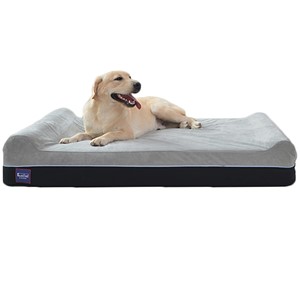
Laifug Large Grey Orthopedic Rectangle Bed
Price At Time of Publish $130.00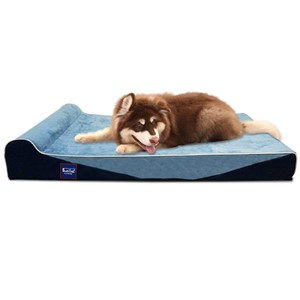
Laifug Large Blue Orthopedic Rectangle Bed
Price At Time of Publish $130.00 $110.00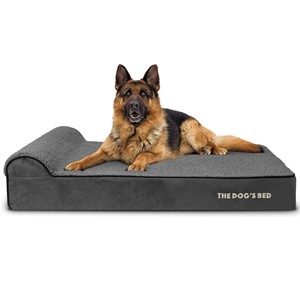
The Dogs Bed XL Grey Orthopedic Rectangle Bed
Price At Time of Publish $130.00 $185.00
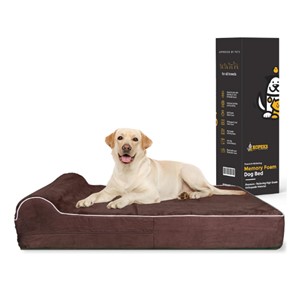
KOPEKS Jumbo Orthopedic Rectangular Bed
Price At Time of Publish $130.00 $110.00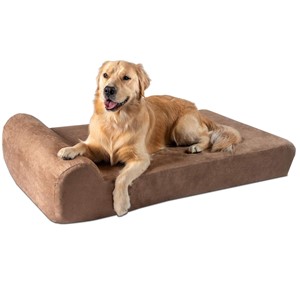
Big Barker XL Orthopedic Rectangle Bed
Price At Time of Publish $130.00 $240.00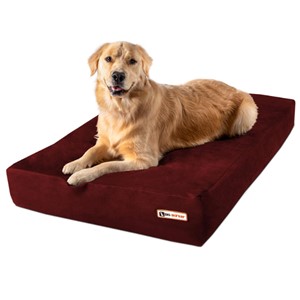
Big Barker XL Burgundy Orthopedic Rectangle Bed
Price At Time of Publish $130.00 $200.00
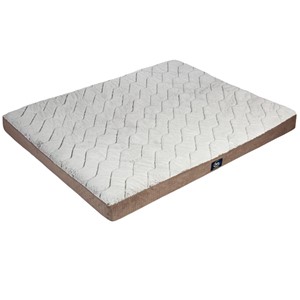
Serta XL Brown Orthopedic Rectangle Bed
Price At Time of Publish $130.00 $80.00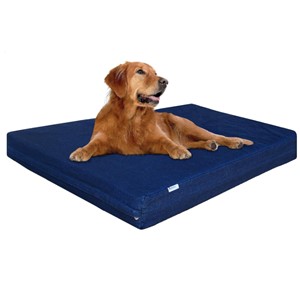
DogBed4Less XL Blue Orthopedic Rectangle Bed
Price At Time of Publish $130.00 $80.00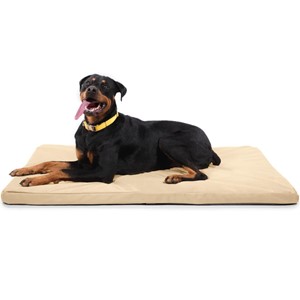
K9 Ballistics XL Sandstone Orthopedic Crate Pad
Price At Time of Publish $130.00 $159.00
Shop Bolster Dog Beds
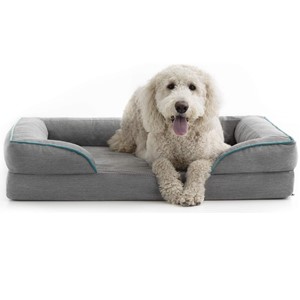
Brindle XL Gray Orthopedic Bolster Bed
Price At Time of Publish $130.00 $79.00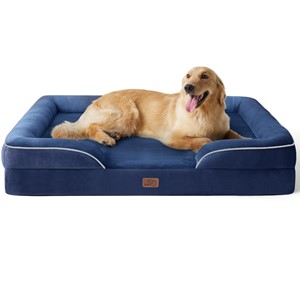
Bedsure XL Blue Orthopedic Bolster Bed
Price At Time of Publish $130.00 $76.00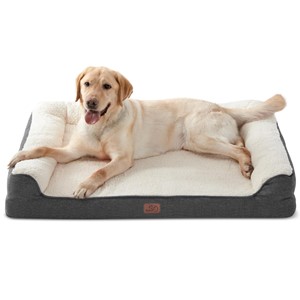
Bedsure XL Grey Orthopedic Bolster Bed
Price At Time of Publish $130.00 $60.00
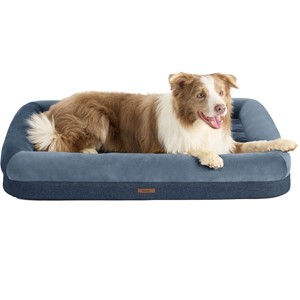
Lesure XL Navy Orthopedic Bolster Bed
Price At Time of Publish $130.00 $40.00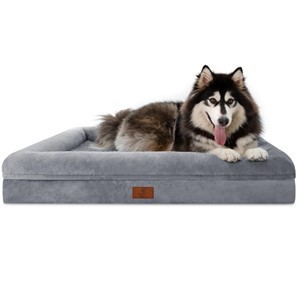
Yiruka XL Grey Orthopedic Bolster Bed
Price At Time of Publish $130.00 $55.00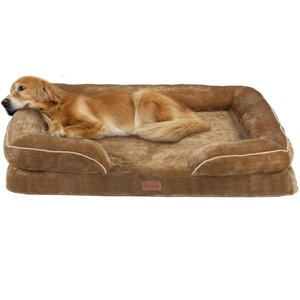
Yitahome XL Brown Orthopedic Bolster Bed
Price At Time of Publish $130.00 $37.00
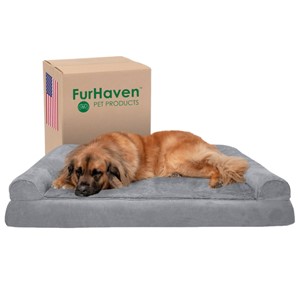
Furhaven XL Gray Orthopedic Bolster Bed
Price At Time of Publish $130.00 $130.00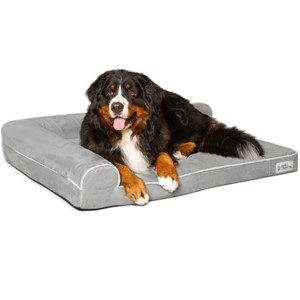
PetFusion XL Grey Orthopedic Bolster Bed
Price At Time of Publish $130.00 $60.00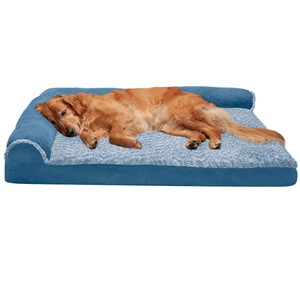
Furhaven Jumbo Blue Orthopedic Bolster Bed
Price At Time of Publish $130.00 $60.00
Shop Elevated Dog Beds
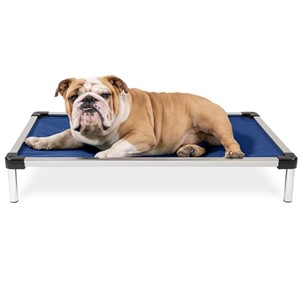
K9 Ballistics Chew Proof Elevated Small Bed
Price At Time of Publish $130.00 $129.00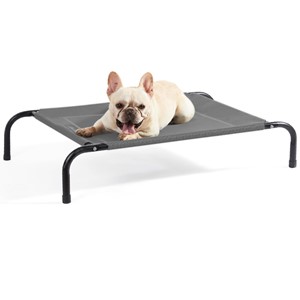
Bedsure Medium Elevated Dog Bed
Price At Time of Publish $130.00 $33.00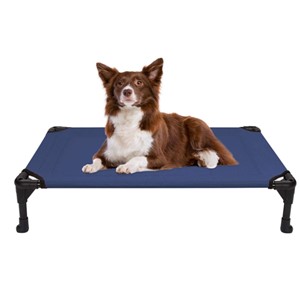
Veehoo Medium Elevated Dog Bed
Price At Time of Publish $130.00 $45.00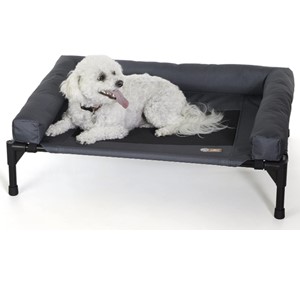
K&H Pet Products Elevated Bolster Dog Bed
Price At Time of Publish $130.00 $57.00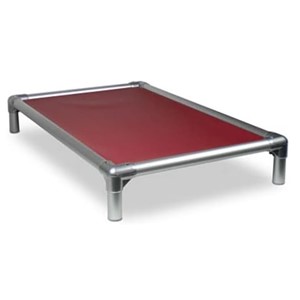
Kuranda Elevated Chew Proof Small Dog Bed
Price At Time of Publish $130.00 $134.00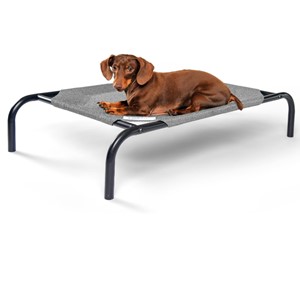
Coolaroo Small Elevated Dog Bed
Price At Time of Publish $130.00 $21.00
Related Articles
Below are some other articles you may be interested in reading. Just select on the topic of interest to learn more about it.
Go back to the Dog Luxury Beds home page.
